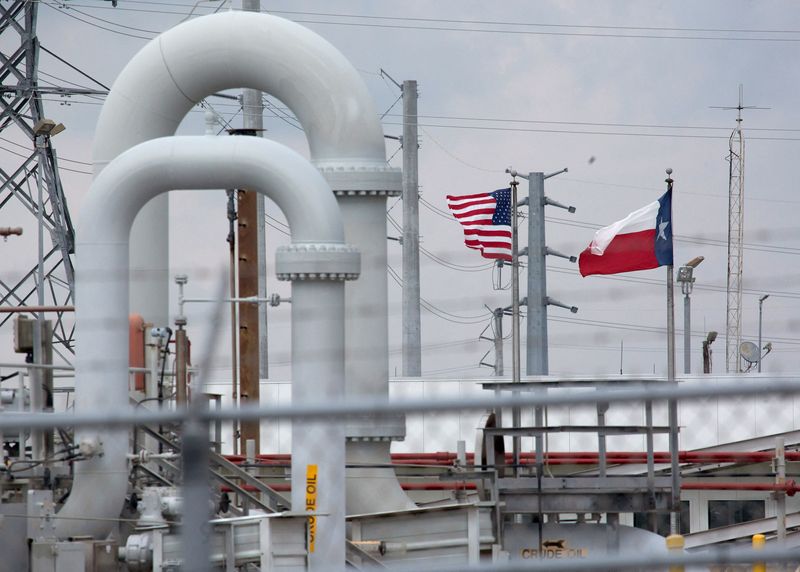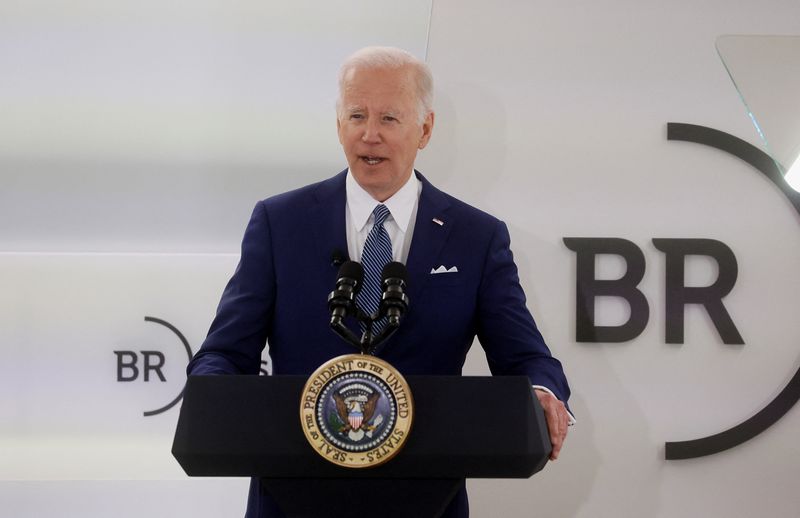By Timothy Gardner
NEW YORK (Reuters) - President Joe Biden on Thursday will announce the release of a million barrels of crude oil every day for the next six months from the U.S. Strategic Petroleum Reserve to help cool oil prices, the largest such release from the stockpile in history.
The move is being undertaken because oil prices have spiked since Moscow's invasion of Ukraine on Feb. 24 and subsequent sanctions slapped on Russia by the United States and its allies.
The latest amount of U.S. oil release would make 180 million barrels of oil available, or the equivalent to about two days of global demand, and would mark the third time the United States has tapped the SPR in the past six months.
It is also possible that the International Energy Agency, the world's energy watchdog of which the United States is a member, may also release barrels when IEA countries meet on Friday.
The 31-member IEA, representing industrialized nations but not Russia, presided over the fourth coordinated oil release in its history on March 1 of over 60 million barrels of crude – its largest yet.
As part of the IEA's March release, the United States committed to release 30 million barrels of SPR oil.
Before that, Washington pledged in November to release 50 million barrels of SPR oil, though an expected move in tandem from China did not materialize, as prices surged along with demand recovery for the COVID-19 pandemic.
WHY WAS THE SPR CREATED?
The United States created the SPR in 1975 after the Arab oilembargo spiked gasoline prices and damaged the U.S. economy.Presidents have tapped the stockpile to calm oil markets duringwar or when hurricanes hit oil infrastructure along the U.S.Gulf of Mexico.
HOW MUCH OIL DOES THE SPR HOLD?
The reserve currently holds about 586 million barrels indozens of caverns in four heavily guarded locations on theLouisiana and Texas coasts. The country also maintains small heating oil and gasoline reserves in the U.S. Northeast.
HOW DOES THE SPR GET OIL TO MARKET?
Because of its location near big U.S. refining orpetrochemical centers, the SPR can ship as much as 4.4 million barrels per day. It can take only 13 days from a presidential decision for the first oil to enter the U.S. market, according to the Energy Department.
Under a sale, the Energy Department usually holds an online auction in which energy companies bid on the oil. Under a swap, oil companies take crude but are required to return it, plusinterest.
Prior to the last six months, U.S. presidents have authorized emergency sales from the SPR three times, most recently in 2011 during a war in OPEC member Libya. Sales also took place during the Gulf War in 1991 and after Hurricane Katrina in 2005.
Oil swaps have taken place more frequently, with the lastexchange held in September after Hurricane Ida.
WHAT OTHER COUNTRIES HAVE STRATEGIC RESERVES?
The United States is responsible for about half of the world's strategic petroleum reserves.
The United States and the other IEA member countries that include Britain, Germany, Japan and Australia are required to hold oil in emergency reserves equivalent to 90 days of net oil imports. Japan has one of the largest reserves after China and the United States.

China, an associate member of the IEA and the world'ssecond-leading oil consumer, created its SPR 15 years ago andheld its first oil reserve auction in September. Another IEA associate member, India, the third-biggest oil importer and consumer, also maintains a reserve.
State storage across the Organisation for Economic Cooperation and Development, most of whose members belong to IEA, came to nearly 1.2 billion barrels of crude as of January, according to the IEA.
